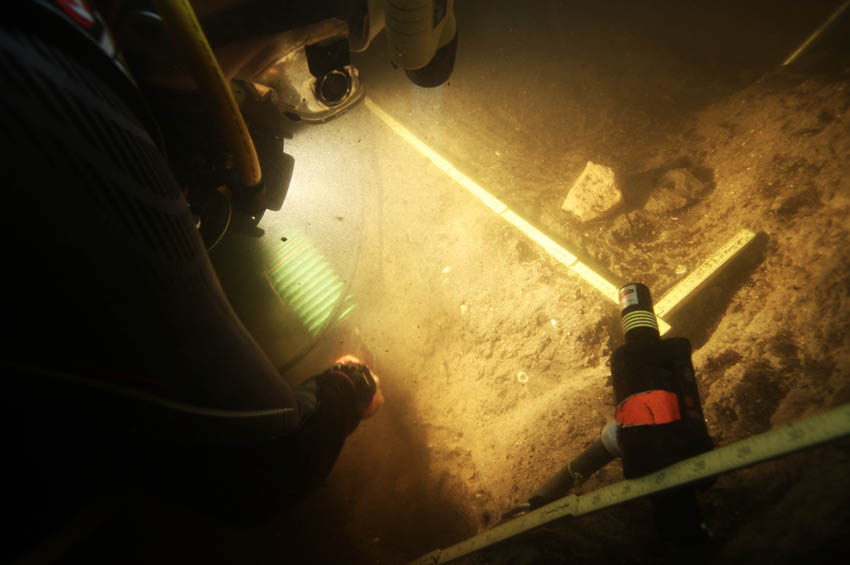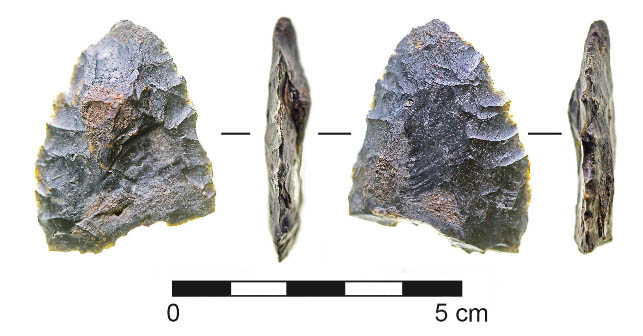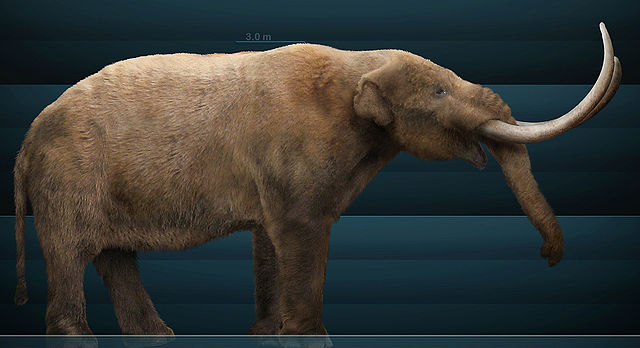Archeologists working in Florida have discovered the earliest evidence yet of humans living in that part of the world. And what exactly was found? About a dozen stone tools and bones of the extinct mastodon. Mastodons were prehistoric relatives of the modern elephant (like woolly mammoths, but with straighter tusks, way less hair, and no hump on their upper back).
Researchers always knew that the mastodon was an important part of the diet and culture of early humans in the area. But this particular deposit (a layer of sediment or dirt that the artifacts were found in) dates back to around 14,500 years ago. That's 1500 years earlier than first thought.
Deep dive

A picture of the bottom of the sinkhole where the excavation was done. (S. Joy, Courtesy of CSFA)
Maybe the most interesting thing about this find is just how deep underwater the site is: about 9 metres (30 feet) down in a sinkhole at the base of the Aucilla River. (And you thought finding bones in the dirt was challenging!) Researchers had to use flashlights, scuba gear, and pumps and hoses to remove the sediment on top of the artifacts. The extra patience involved was rewarded — the underwater location of the deposit meant that the artifacts were very well preserved and "sealed". The researchers believe that thousands of years ago, this submerged sinkhole was actually a pond in a much drier area. Both the mastodon and humans would've used it as a water source.
How they got here
Understanding exactly how and when early humans first came to the Americas is a big deal to archeologists who study this part of the world. The one thing researchers agree on? They didn't originate here. The species Homo sapiens (that's us!) first evolved on the continent of Africa. Over tens of thousands of years (hey, it was a looooooong walk), they migrated into Europe and across Asia. The last places they reached were North and South America, crossing from Asia by using a "land bridge" that once connected Siberia (eastern Russia) with Alaska.
 A stone tool found at the site. (Courtesy of CSFA)
A stone tool found at the site. (Courtesy of CSFA)
Archeologists agree that humans first began arriving into North America around 15,000 years ago. But this continent is a big place, and Florida is a long way away from Alaska, especially on foot. A find like this indicates that humans migrated around North America much quicker than first thought. These humans are the ancestors of the First Peoples who had settled the continent before the arrival of European explorers around 600 years ago.
 This recreation shows what mastodons looked like 14,500 years ago. (Wikimedia Commons)
This recreation shows what mastodons looked like 14,500 years ago. (Wikimedia Commons)









